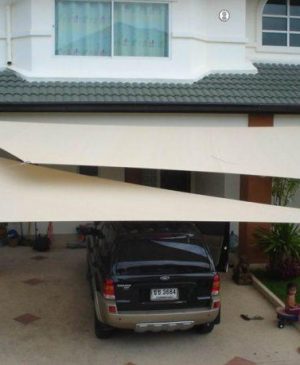The prospect of moving can be both thrilling and overwhelming. Whether you’re transitioning to a new home within the same city or relocating across the country, the logistics involved can quickly become complicated. Between packing, coordinating transport, and ensuring everything arrives safely at your destination, the process is often more stressful and costly than anticipated. However, moving doesn’t have to break the bank. By implementing a smart, organized approach—specifically, using a checklist—you can save both time and money, making the entire experience more manageable and less financially draining. In this article, we will explore how checklists, when used effectively, can significantly reduce moving costs while helping you stay organized and efficient throughout the process.
The Power of a Moving Checklist
A moving checklist is a simple yet incredibly powerful tool that serves as your guide throughout the entire relocation process. It ensures that you’re on top of every detail, helping you plan ahead and avoid last-minute scrambling. But beyond organization, checklists also hold the key to saving money during your move. By providing a clear roadmap, they can help you avoid unnecessary expenses, eliminate wasted time, and prevent costly mistakes. Let’s delve into the specific ways checklists can save you money.
1. Plan and Budget Ahead
The first way a checklist can help save money is by encouraging you to plan and budget well in advance. One of the biggest causes of overspending during a move is lack of preparation. Without a checklist, it’s easy to forget important steps or misjudge the costs involved.
By creating a detailed checklist, you can break down your moving tasks into manageable sections, each with an associated budget. This allows you to track your expenditures and avoid financial surprises. Whether you’re hiring movers, renting a truck, or purchasing packing supplies, knowing the full scope of your needs—and when to acquire them—can help you find the best deals.
A typical moving budget checklist might include the following categories:
-
Packing supplies: Boxes, tape, bubble wrap, markers, etc.
-
Professional movers or truck rental: Get quotes early on and compare prices.
-
Moving insurance: It’s important to check whether your current insurance covers your belongings during the move or if you need additional coverage.
-
Cleaning services: If you plan to hire help for cleaning your old home, include this cost in your checklist.
By allocating specific funds to each category, you can avoid overspending in any particular area, and if necessary, adjust your plans to stay within budget.
2. Declutter Before You Pack
An often overlooked but incredibly effective cost-saving strategy is decluttering. When you’re moving, the less stuff you have, the fewer moving supplies you need, and the smaller the truck you require. A moving checklist helps you schedule the decluttering process well in advance, which can significantly reduce both moving costs and the physical burden of transporting unwanted items.
Create a checklist item for sorting through each room in your home, deciding what to keep, donate, sell, or throw away. This task not only saves you money on packing materials (since you won’t need extra boxes and tape for unnecessary items) but can also generate some income if you decide to sell high-value items.
Additionally, many moving companies charge by weight or volume, meaning the more stuff you move, the more it costs. By minimizing your load, you can reduce these charges, whether you’re renting a truck or hiring a full-service moving company.
3. Schedule Your Move During Off-Peak Times
Another key area where a checklist can save money is in timing. The timing of your move plays a huge role in the overall cost, especially when using professional moving services. Moving companies tend to charge higher rates during peak seasons, such as weekends, holidays, and the summer months.
A moving checklist can include a note to check local moving company rates and availability months in advance, so you can book during off-peak times. Moving mid-week, during the fall or winter, can help you avoid inflated prices, and often, you’ll find more flexible availability for truck rentals.
Additionally, if you’re handling the move on your own, consider renting a truck on a weekday. Many truck rental companies offer lower rates on weekdays compared to weekends, and availability is often better as well.
4. Avoid Last-Minute Professional Help
A significant cost-saver associated with a moving checklist is the ability to avoid the need for emergency services. Last-minute hires, whether they’re movers, a truck rental, or cleaning services, often come with premium prices. By staying on top of tasks and following a timeline outlined in your checklist, you can secure affordable options in advance, ensuring that everything is lined up well before moving day.
This foresight can also prevent rushed decisions that often lead to paying more than necessary. For example, many people wait until the last minute to rent a truck, only to find that their preferred size or company is unavailable. This can force them to accept a less-than-ideal option, potentially increasing costs. A checklist will help you identify tasks like booking truck rentals, hiring movers, or securing parking permits far ahead of time, leaving you with plenty of choices at competitive prices.
5. Minimize Time-Consuming Mistakes
A well-organized checklist allows you to avoid the mistakes that can cost you time and money. For example, if you fail to adequately prepare fragile items or pack efficiently, you may have to spend more on repairs or replacements. Similarly, if you don’t plan for parking permits or don’t know the best route to take for the move, you might end up paying fines or wasting time with delays.
By following a comprehensive checklist, you’ll have reminders to check for these potential issues, which allows you to resolve them before they become costly problems. Properly labeling boxes, for example, ensures that unloading is quicker, helping you avoid the extra cost of having to hire additional workers for a longer period.
6. Do It Yourself (DIY) Wisely
While hiring professional movers can be convenient, it’s not always necessary, especially if you’re moving within a local area. A moving checklist will help you realistically assess what tasks you can handle on your own and which ones might require help. By identifying tasks that you can DIY—such as packing and loading—while leaving more specialized tasks (like disassembling furniture or heavy lifting) to professionals, you can save a significant amount of money.
To make the DIY process smoother, add specific items to your checklist, such as renting a dolly or other moving equipment, borrowing furniture pads, or securing friends or family to help on moving day. These simple measures allow you to complete much of the move without having to spend extra on hired labor.
Conclusion
A moving checklist is far more than just a helpful organizational tool—it’s a cost-saving strategy that can streamline your move and protect your wallet. By planning ahead, decluttering, scheduling wisely, avoiding last-minute hires, and minimizing costly mistakes, you’ll significantly reduce your moving expenses. The power of a well-constructed checklist lies not just in keeping you organized, but in enabling you to make informed decisions that prevent unnecessary spending. With the right preparation and foresight, moving can be both an affordable and stress-free experience. So, next time you’re preparing to relocate, start with a comprehensive checklist, and watch as your moving costs shrink—leaving you with more resources to invest in your new home.


















